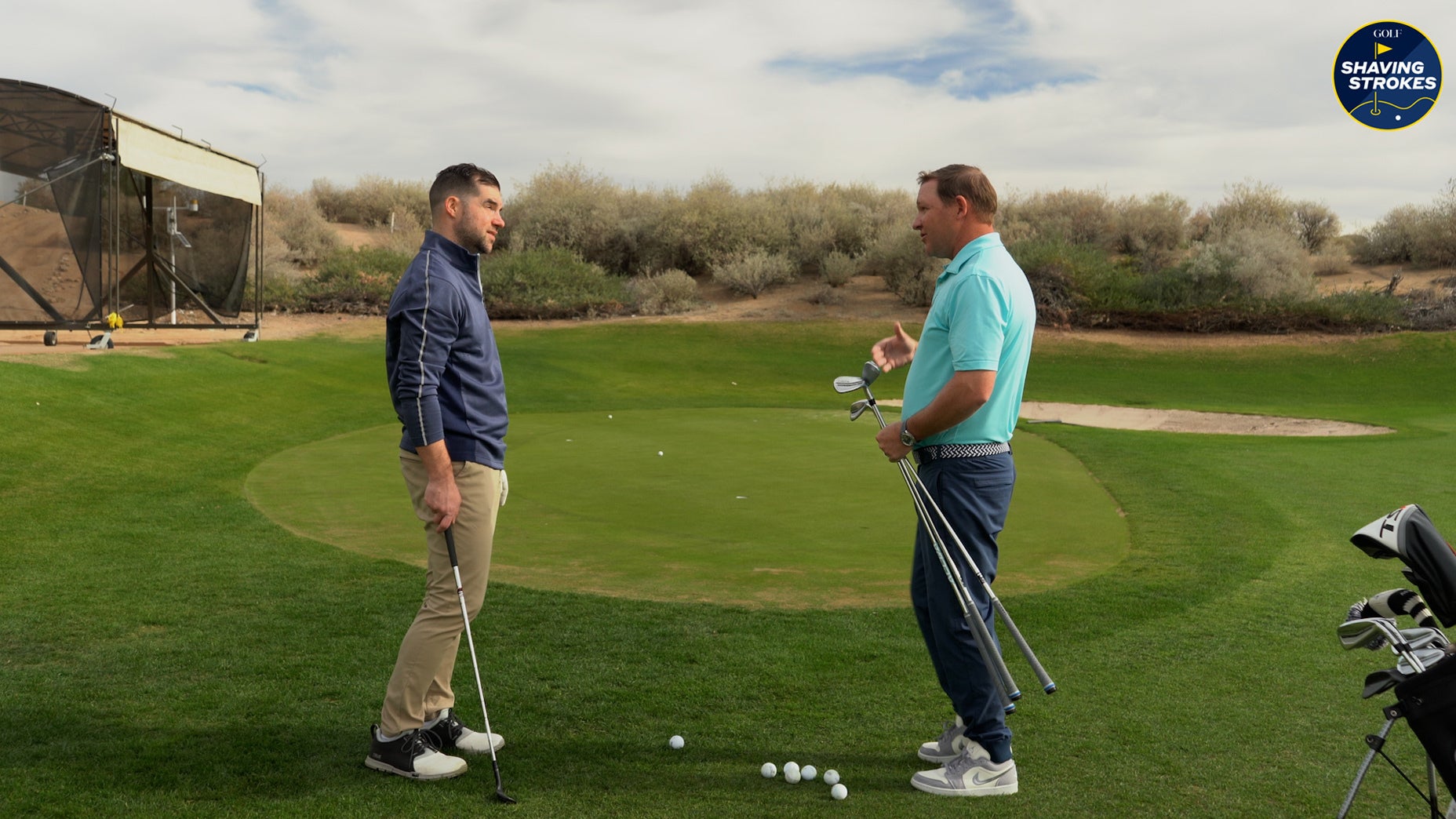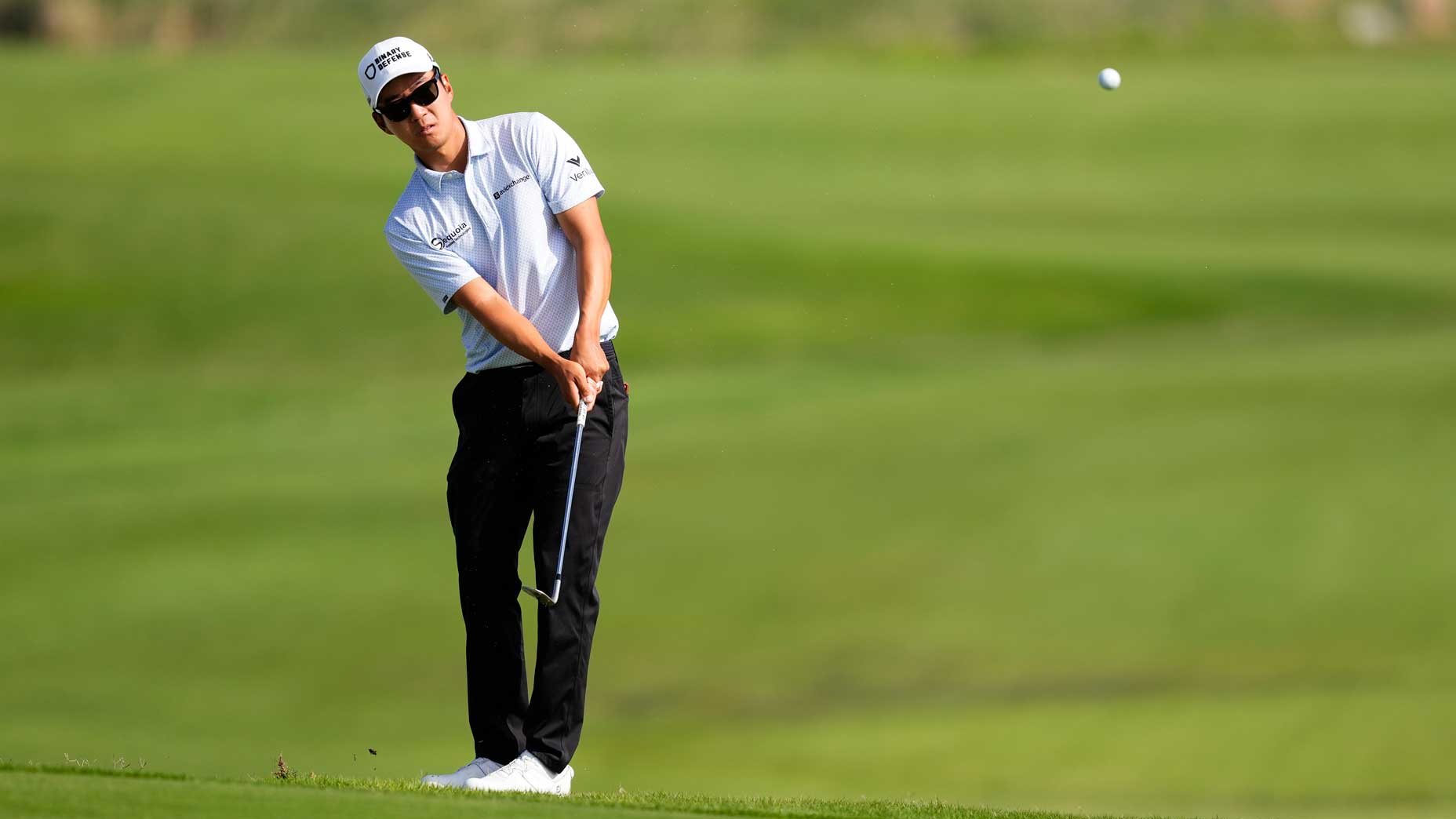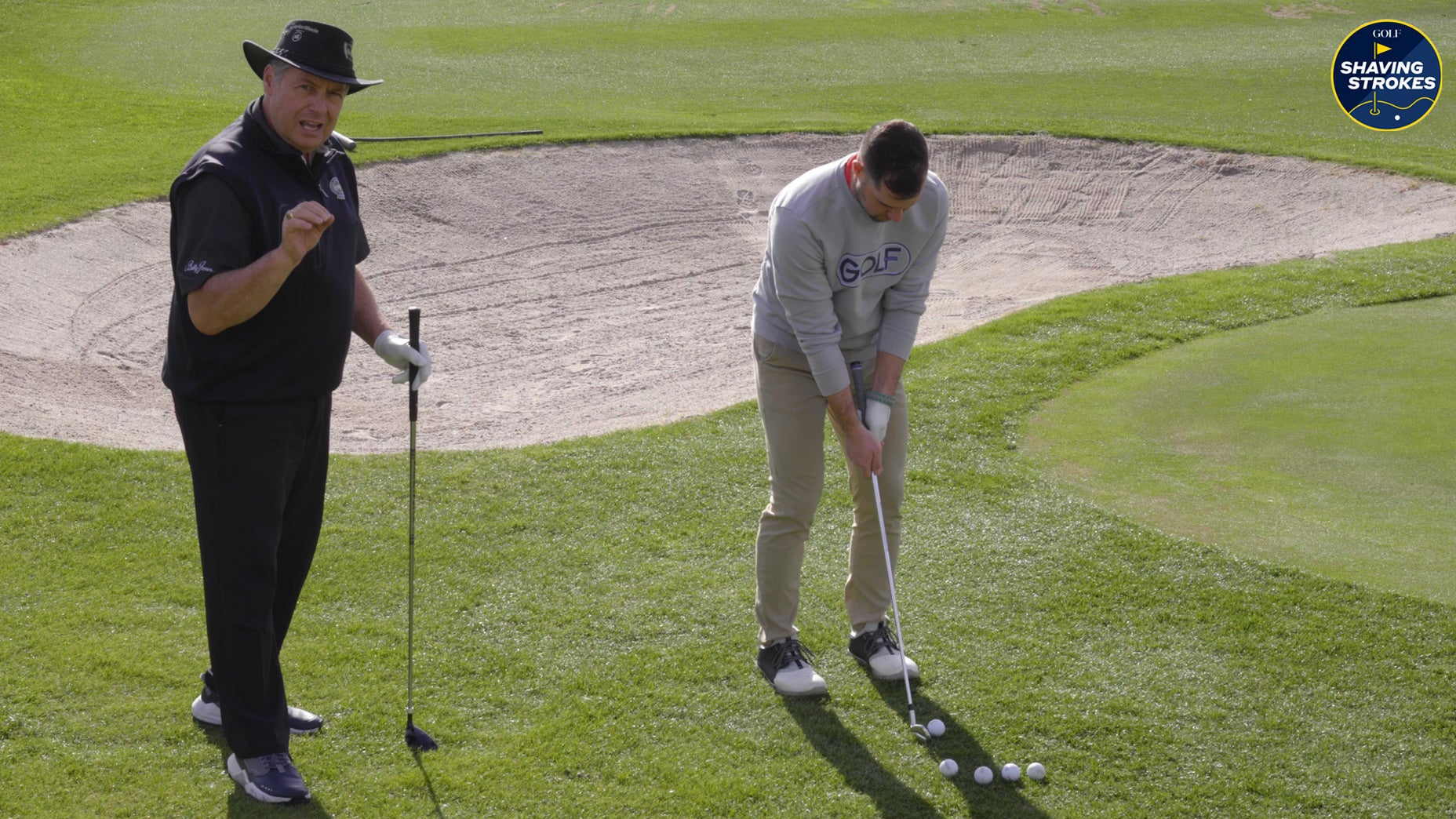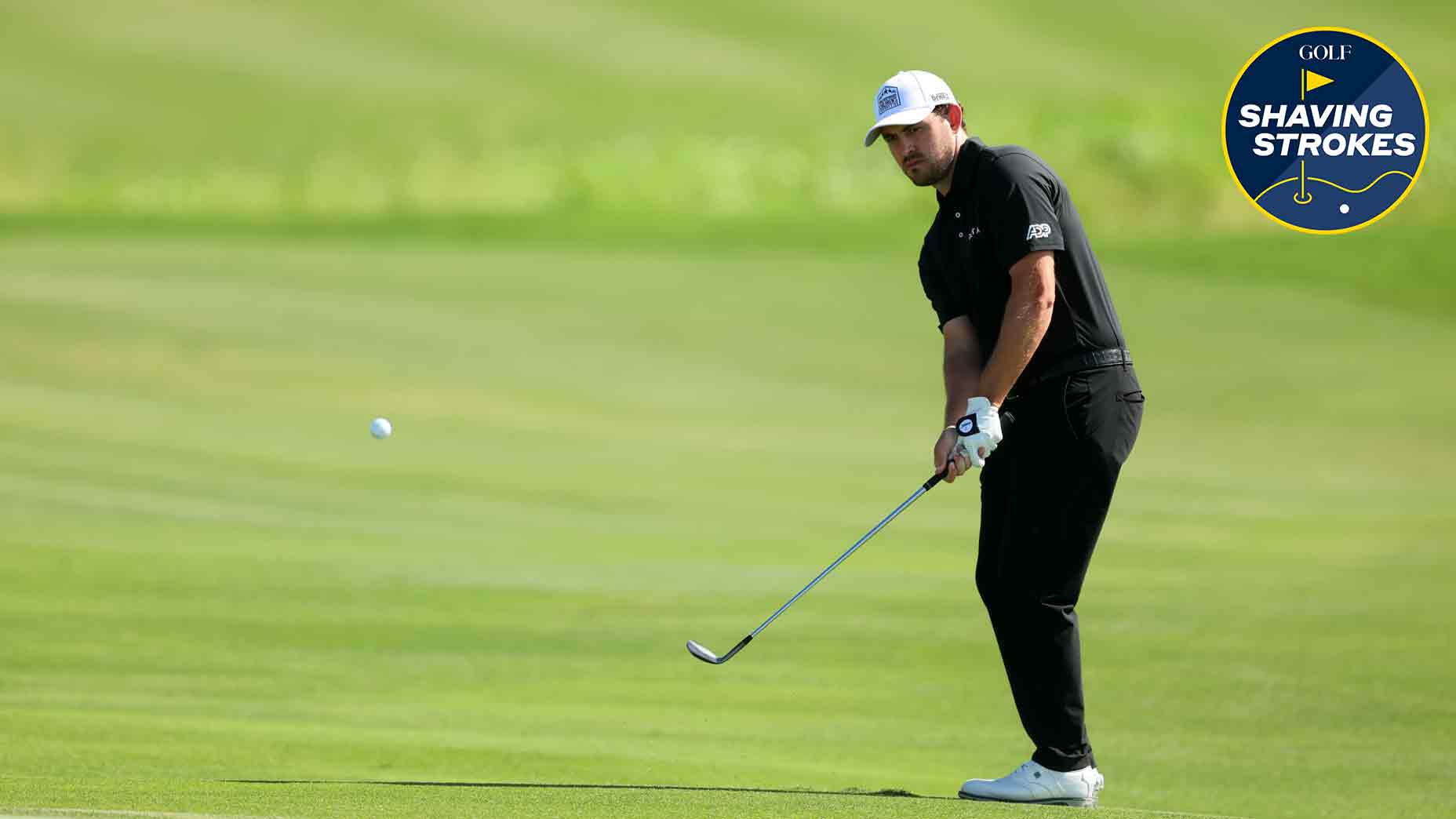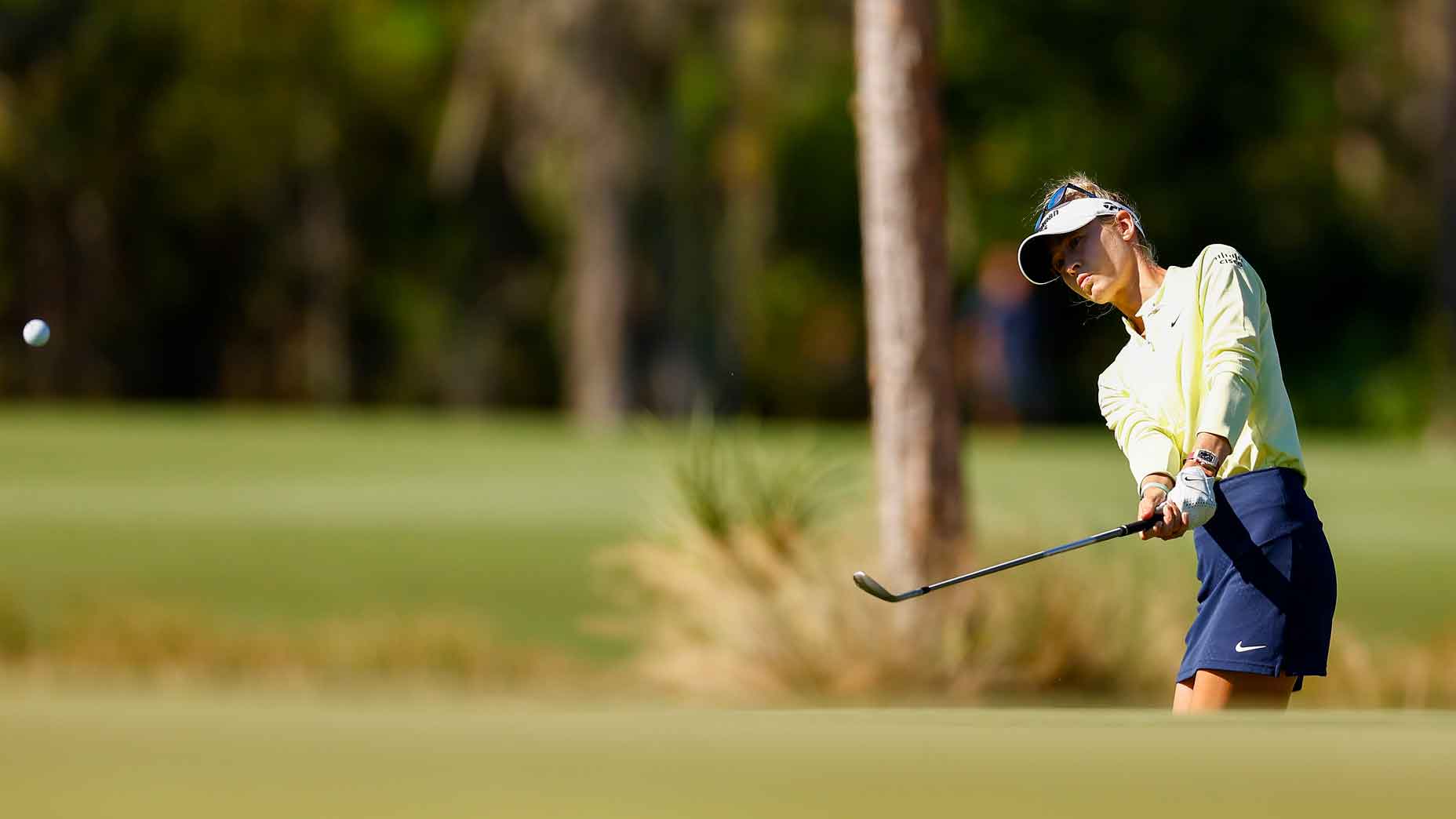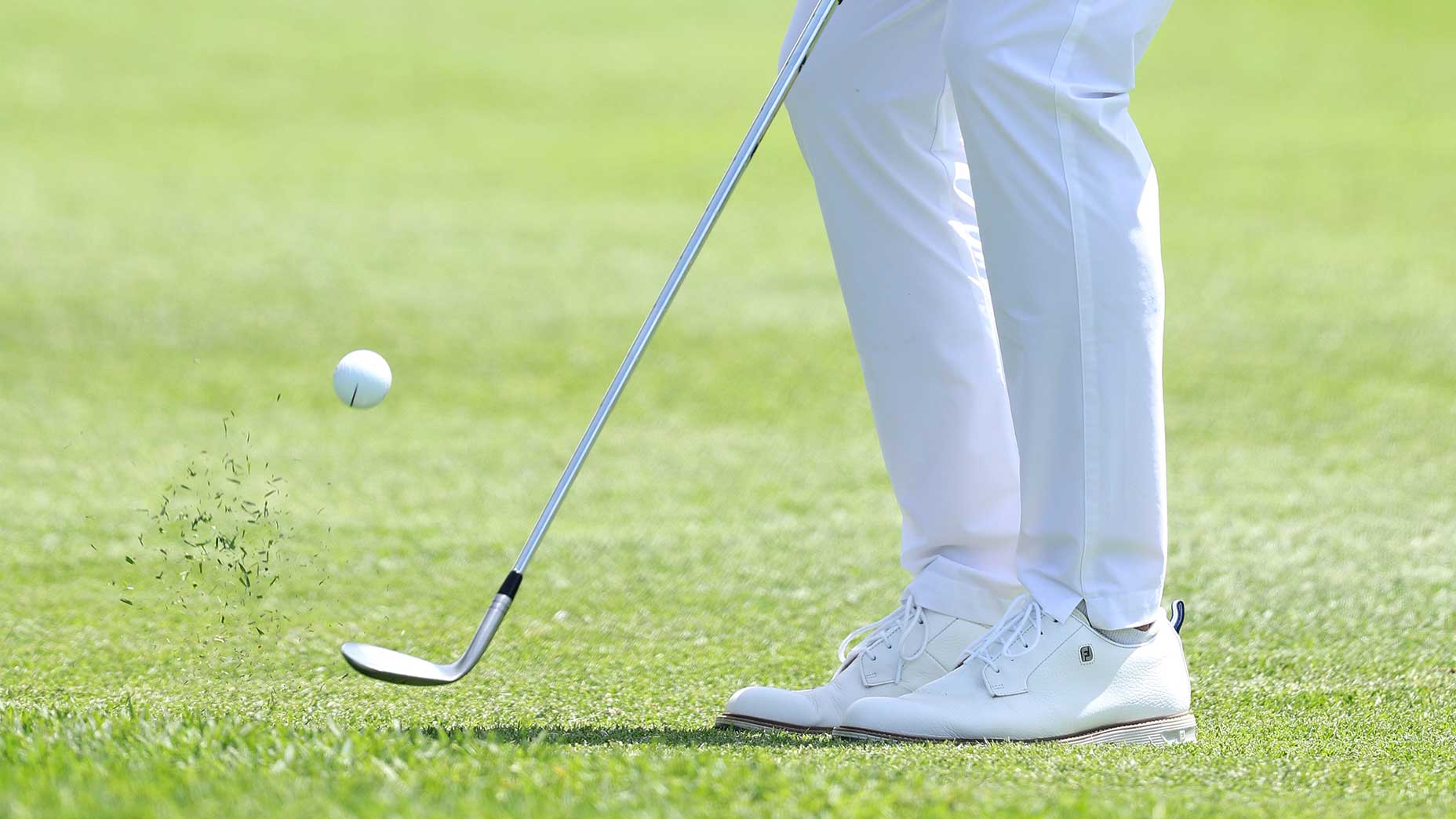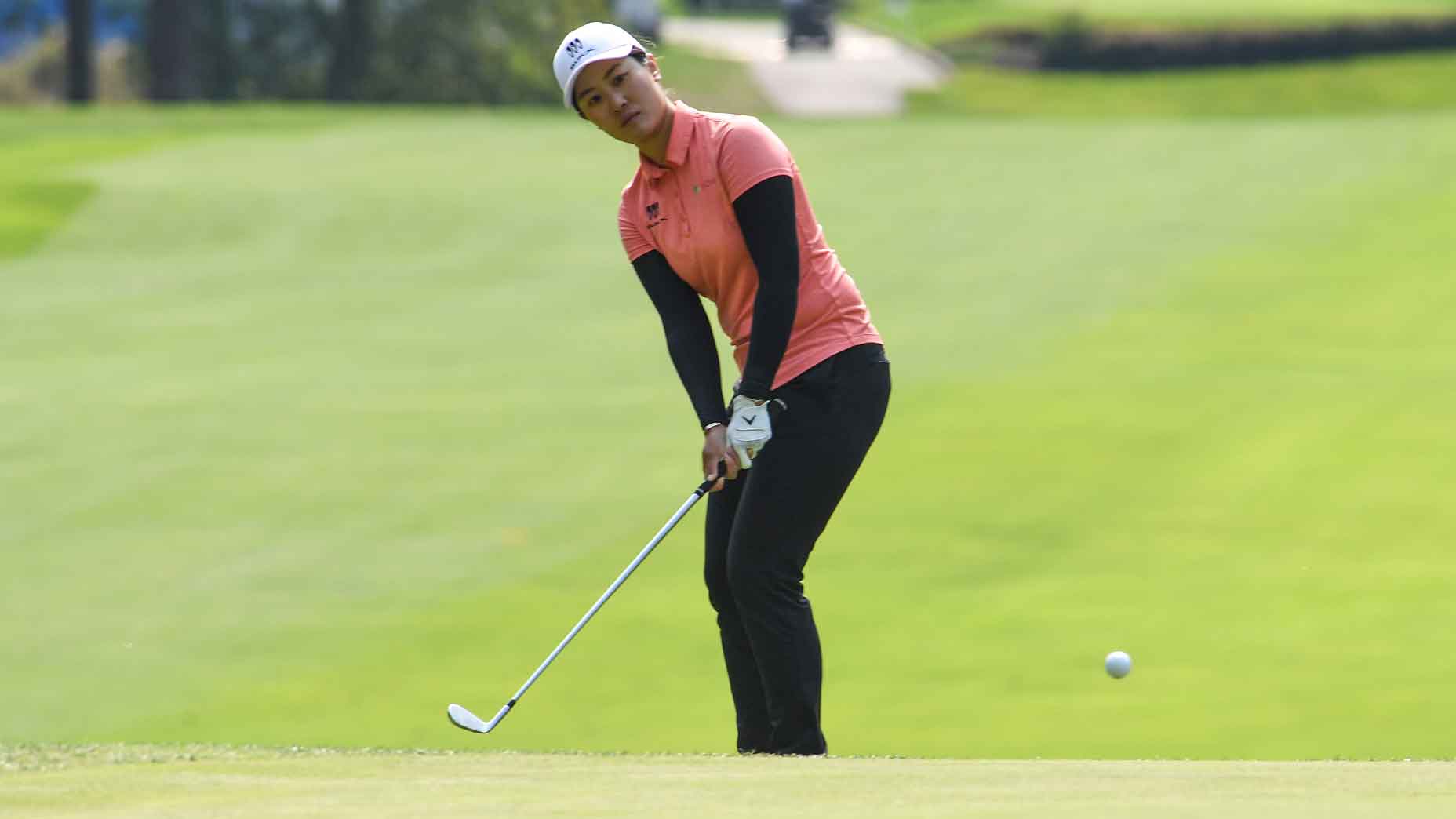10 short game tricks to instantly lower your score
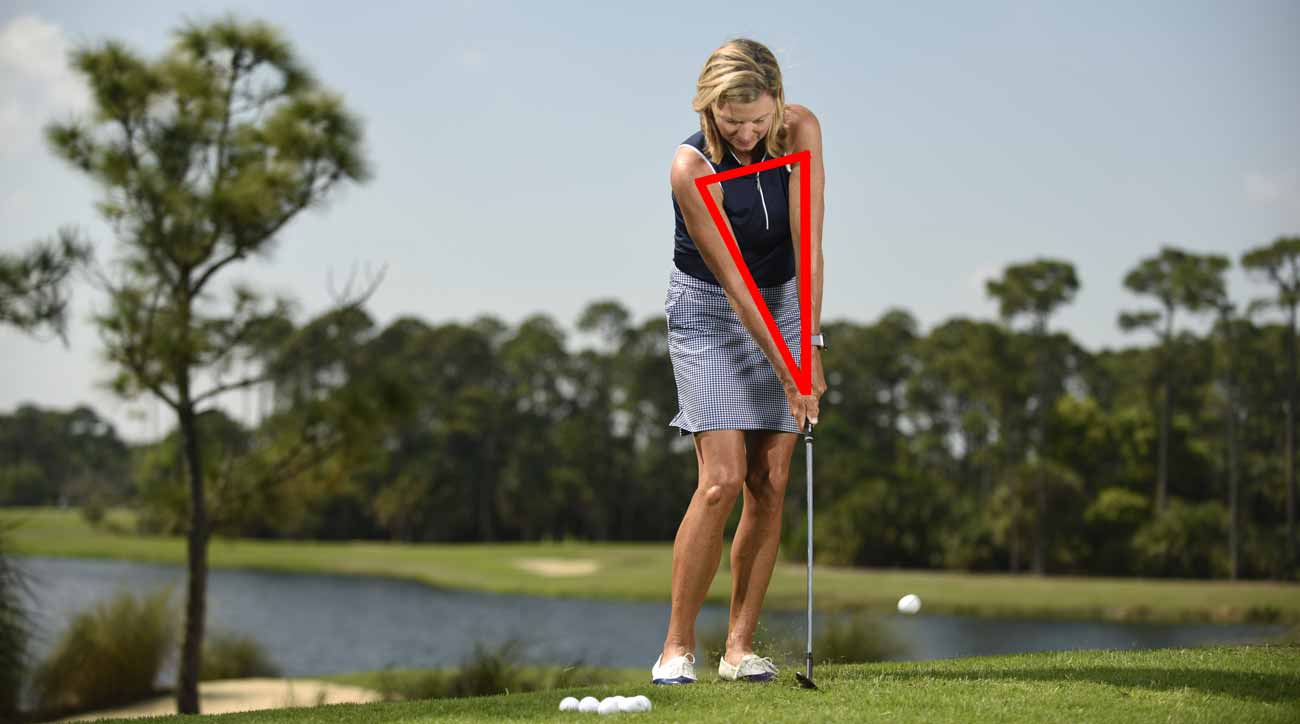
Maintain the triangle formed by your shoulders and arms at address throughout your motion. The club will hug the ground and catch every chip super-crisp.
One of the most efficient ways to lower your golf scores is to improve your short game. A combination of good technique, proper shot selection, structured practice can add up quickly.
Sometimes, however, life gets in the way, and it’s hard to find the time to take a lesson or practice a much as you might like. Here are some shortcuts and ways to improve your technique right away.
1. Putting turn toes in
Keeping your lower body still when you putt will make it much more likely to roll your golf ball on the line you are aimed and also be more consistent controlling distance.
You can improve your chances of staying still by turning your toes in much like Arnold Palmer used to do. This will force you to keep your lower body still as it limits your ability to move and turn. You can use this for a drill, but many times, drills can work just as well when used over the span of your round.
2. Pace your putts – one inch per step
For those golfers who have played for a long time, controlling distance with putting is something they do thanks to years of trial and error.
But for newer golfers or those who struggle around the green, having a system to control distance can be a welcome skill.
And while it may be a bit oversimplified, you can improve your distance control by using a simple system of adding one inch to your backstroke for every foot of putt distance. It’s not perfect, but it’s a Bryson-approved way of helping gauge your distances.
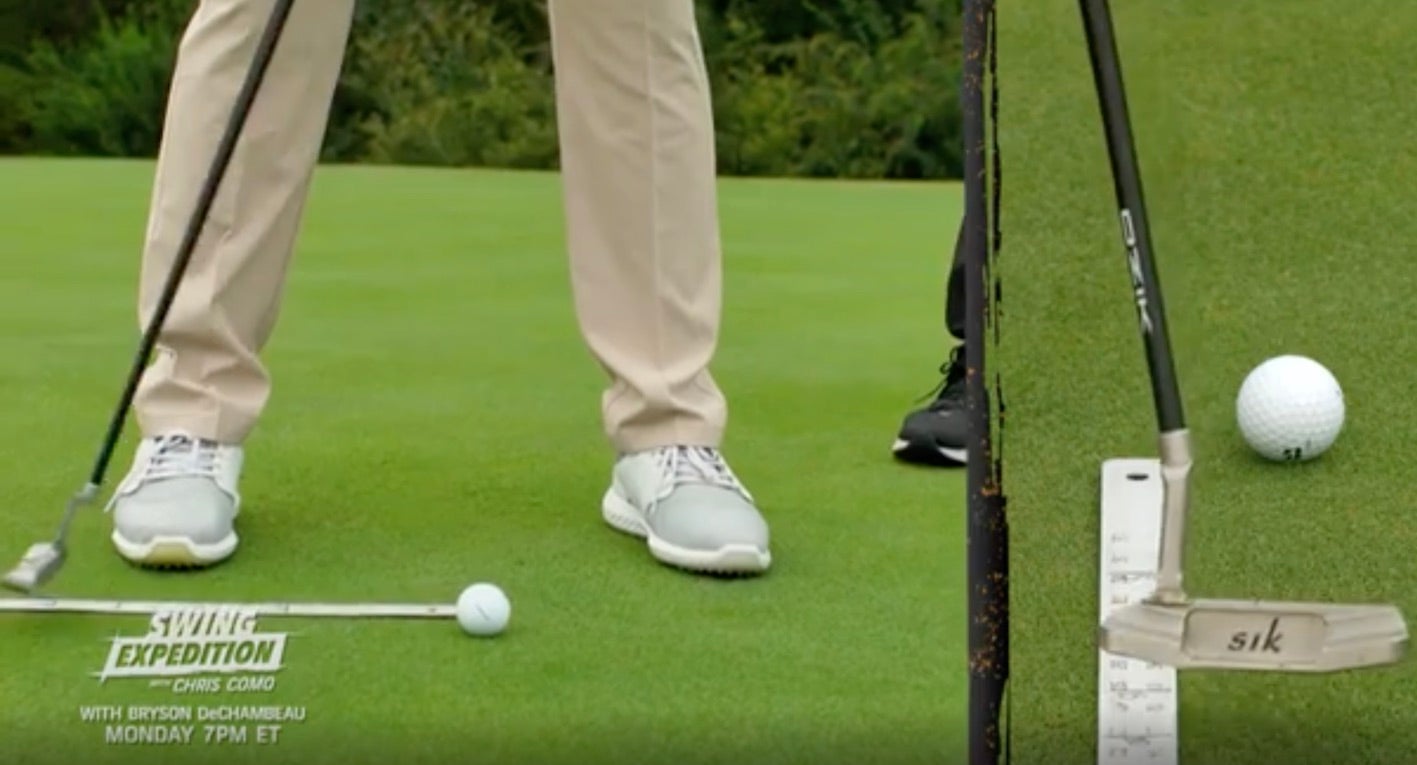
3. Stroke then look
A good habit when putting is to complete your stroke, hold the finish and THEN turn your eyes to see the ball rolling.
This goes back to being still over your putting stroke to eliminate unnecessary and unwanted movement that can make it difficult to control distance and direction.
Make sure you complete your stroke, hold your finish and once the ball is well away from you, then turn to see it either go in, or roll close to the pin on a longer putt.
4. Lean forward when putting
You’ve heard the cliche that golf is a game of inches. One of the more frustrating examples of that is when your ball rolls just past the pin, off the edge of the green and settles into really deep rough. While it can be very tricky to hit a soft chip or pitch if you are just a couple of feet into the rough, you can putt instead.
To do this, make one very important setup change: place a ton of weight on your forward foot and drop your forward shoulder to match.
This extreme shoulder tilt toward the target will change the angle that the putter head approaches the ball. Rather than a shallow, sweeping stroke, this stance will help the putter glance down the back of the ball, which makes it much easier to have direct contact between the ball and the putter face.
This extreme contact angle will cause the ball to “jump” a bit, which typically clears the longer grass and then when the ball lands onto the green it will start to roll normally.
Once you get the feel of this it is a great way to shave strokes and also limit risk.

5. Choke down on short shots
Those really short chips and pitches can often be a big challenge when it comes to getting your distance control right. Here is a wonderful opportunity to use physics: shorten the lever, and less power will be delivered. The lower you hold on the club the shorter your golf ball will travel. It’s as simple as that!
Don’t hesitate to hold the very bottom of the grip, and in extreme cases, come off of the grip and down to the shaft.
6. Heel up for chips
When you are hitting your basic chip shot, grip lower on the handle, narrow your stance and slightly lean your weight, club shaft and upper body forward toward the target.
Many golfers will incorrectly fall back and try to lift the golf ball. This can cause you to hit the ground before the ball or even top it, but in either case contact will suffer.
A great “trick” to avoid this is to get all set up and then pick up your back heel and keep it up throughout your stroke. This will help to avoid any inclination to fall back and try to lift the golf ball, helping to produce solid ball and turf contact.
While this may be used as a drill, if you find it makes a big difference in contact, you may want to consider adding it to your on-course play.
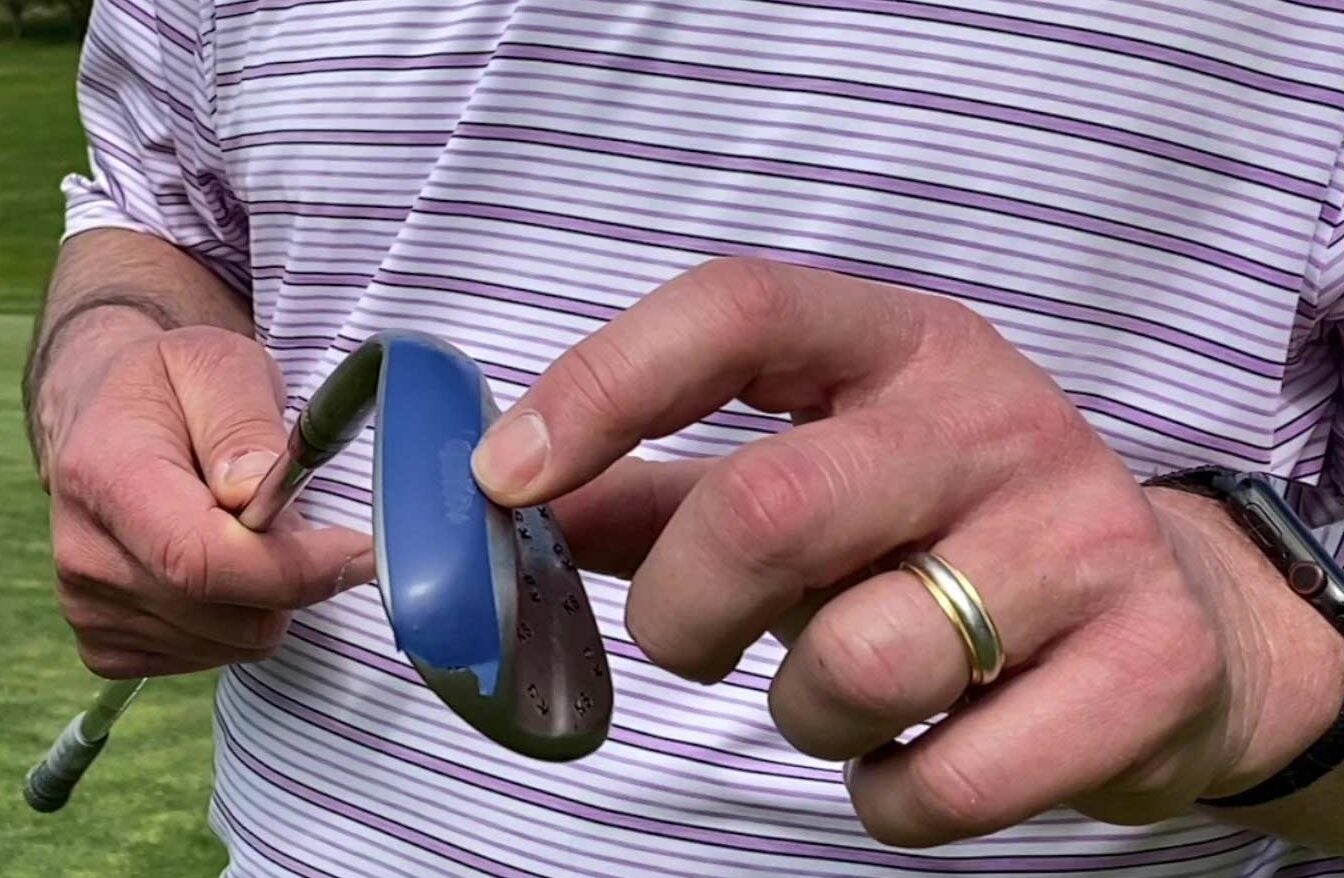
7. Square looks open for pitches
When you are hitting a pitch shot with your lob, sand or gap wedge, the bottom is rounded on purpose. It’s called bounce. This design characteristic is built to allow your club to glide across the grass and not dig.
The good news is when you set the club properly on the bottom — where it doesn’t dig — there’s no reason to be hesitant about letting it hit the ground. This is what will help you to hit high, soft, beautiful pitch shots.
Setting this club properly on its bottom can look “open,” but rest assured, it’s not. It’s lofted, which is just how you want it.
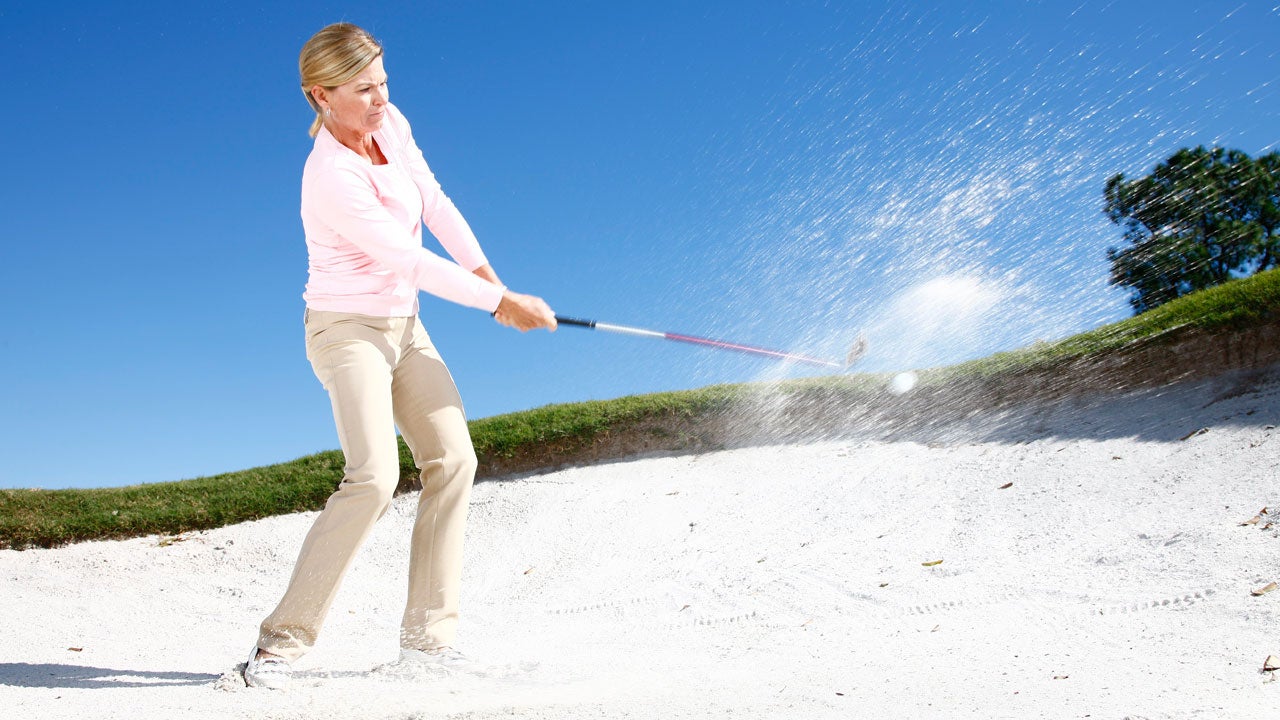
8. Remeber: Speed and sand
Greenside sand is one of my favorite areas to teach because it seems to cause so many frustrations for regular golfers.
The two major skills you need to be a good bunker player are 1) to take a lot of sand and 2) to generate lots of speed. Speed without sand, well….it’s gone and going far away. Sand without speed and you probably get to take a few steps forward and try it again.
I think one of the best ways to get good at this is to practice simply throwing sand out of the bunker and onto the grass. By taking the golf ball out of the scenario, you can practice proper motion.
Once you have the proper motion for whenever you find yourself in a bunker, keep it. Don’t change your technique, change your club selection. Higher lofted for closer shots and less loft for longer ones, but the motion is always the same.
9. Dig your feet in when you’re in the bunker
When in a bunker it is important to have your clubhead enter the sand before the ball, and stay into the sand long enough to exit the sand well after the ball.
What makes this possible comes from understanding what needs to happen, and also a proper setup.
The more you dig your feet into the sand at address, the more you lower the bottom of your swing. If you struggle with taking enough sand, remember that the more you dig your feet, the easier it will be to make that nice long divot that will produce successful sand shots. And don’t be shy here. Really dig your feet in enough to make the soles of your shoes disappear.
10. Always remember: Putt, chip, pitch
One of the quickest ways to improve you score and your short game is to limit your risk by choosing the least risky shot when possible. And if you have been around me at all, you understand that this is such a key to success.
Your priority order for short game:
1. Putt whenever you can.
2. Chip when you can’t putt.
3. Pitch only when you have to.
Simply understanding that order and sticking to it when you play will limit your risk and also allow subtle misses to not show up on your scorecard.
You might be surprised to know that better players know to limit their risk and choose the shot they can execute the highest percentage of the time, even if they’re proficient in all areas of their short game.
While having time to practice and take lessons is nice and will pay off on the course, having little “tricks” to help you to make better decisions and understand fundamentals can help you to see results right away.


